
If there's one thing that 343 Industries does better than any other developer, it's reinventing itself. Between 2011 and 2015, Microsoft's powerhouse released four different Halos, but compare any two of them, and you'd think they were the fruit of different studios. Halo: Combat Evolved Anniversary was a loyal, by-the-book remake of the original game. On the other hand, The Master Chief Collection had far more bells and whistles hanging off of it and stridently reimagined the sights and sounds of Halo 2. Halo 4 was a triumph of polish that yielded some of the most refined weapon handling and insightful combat feedback up to that point. It was also an uncomfortably cold game that lacked individual identity. Halo 5: Guardians, however, was brimming with personality. Its delicate movement mechanics and high octane take on Firefight lent it my favourite multiplayer to date, even if the throughline of the Campaign got lost in its scope.
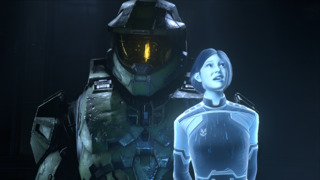
After Guardians, the fandom waited in hallowed anticipation for six years before the series again took to the stars. The wait is now over, and with Halo Infinite, 343 has produced the most 343 game yet. In the past two decades, there has been no Halo more transformative than this one. Its mutation of the series has resulted in innovative and elating improvements. It's also overstretched the developer's abilities and caused the franchise to slip into some of the most offputting practices of the modern games industry.
Originally, I had planned to write one long review about all the experiences gathered under the Infinite banner. However, as I found myself cutting observations I felt passionate about, I began to realise that I might have bet on the wrong format to describe Halo Infinite. After all, there are people doing the broad product coverage of this crowd-pleaser faster and more accessibly than I can. What I want to do is upload the kind of Halo deep-dive that you can't get at every other outlet. So, I came up with a better idea: What if, instead of writing one article that tries to review all of Infinite, I wrote a few different reviews of individual facets of the game? Today, we start at the threshold of this brave new entry, coming in for landing on Halo's Campaign.
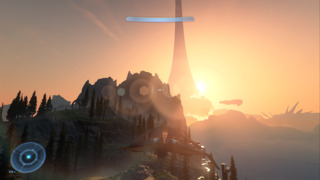
Infinite's open-world story mode takes place on Zeta Halo: an advanced incarnation of the Halo superweapons. There, the narrative wakes at the top of the second act. The Banished, an offshoot of the murderous alien Covenant, have taken over the ringworld. Relying on an everyman pilot and a perky AI only called "Weapon", the legendary Master Chief pushes himself to his limits. He executes a secret mission for the United Nations Space Command, reclaiming the Zeta outpost for humanity. This speculative universe has been so thoroughly explored that it can feel as though Halo's writers are out of stones left to overturn. Starting the plot with the engine already running, and the player filled with questions about what's going on, is a clever attempt to reclaim the curious intrigue of the younger series.
However, for this hide-and-reveal narrative scheme to work, you actually need to do some revealing. Despite a tender mid-game beat when the Pilot encourages Chief to expand his emotional vulnerability, we never learn enough about this excitable Pelican operator for him to really be a character. He's more of a pack mule than anything: dropping off the vehicles we order with glib confirmation. And like a thrifty shopper trying to squeeze out every last drop of toothpaste, 343 continues to eke out the "Cortana's going rampant" storyline. Keep in mind this arc has its roots all the way back in Halo 3. At the same time, Infinite is another tale about visiting a Forerunner ringworld and trying to stop its firing, just like every entry in the original trilogy.
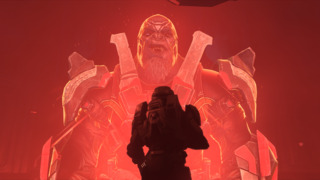
None of these threads gets satisfactorily resolved anyway. The enigmatic conflict that 343 has been ramping up since 2012 is mainly extinguished off-screen, radioed in to us with a rushed jumble of exposition like Chief and Weapon have a train to catch. It's not that there aren't ideas left to explore in Halo that could leave us wide-eyed and wondrous. Infinite debuts a secondary antagonist and faction that have come to the dark side through an understandable set of misfortunes, and they force us to revise our picture of Forerunner history. But we learn so little about those people and their journey that even I was left flipping through the pages of a wiki, wondering what ground floor setup had sailed over my head. 343 cuts whatever big number this new army might have performed in favour of more monologuing from the star villain: Escharum.
Escharum holograms and Banished audio logs are sprinkled around the map like salt on fries, but they only ever make the same point until you're sick of it: The Banished have no concept of mercy, and they would relish ripping the Master Chief limb from limb. Infinite has none of the dramatic politics of Halo 2, or even the ancient aliens of 4 and 5 who felt confused but who still matured the Forerunner backstory. Escharum is just a big guy who wants to hit you with a hammer. And the UNSC sonic diaries aren't much better: they're pedestrian and perfunctory descriptions of military operations. War recounted through the medium of paperwork.
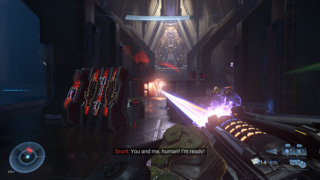
The audio logs are a tiny window into what it's like to play Infinite's story mode overall. This game has most of what made previous Halo campaigns unforgettable. Sometimes it's even taking the pillars of the series as we know it and enforcing them to higher levels of brilliance. It's also teeming with opportunities for open-world hunter-gathering that will get your mouth watering. Yet, the open-world voice and the Halo voice never harmonise; one is always yelling over the other.
We'll talk a little more about the moment to moment combat in the next article. What you need to know now is the subtle dance between you and enemies has survived the voyage to this entry intact. Even twenty years on from its inception, Halo's fundamentals still stand up with relatively little retouching, and that's mind-blowing. You're forced to think intelligently about your positioning and almost always have an assortment of tactical options up your sleeve.
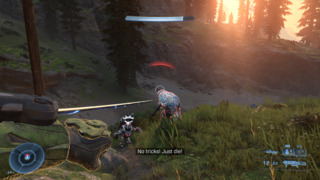
You've probably also heard everyone and their dog saying that the Grappleshot kicks ass, serving as an invigorating complement to that familiar play. I don't want to beat a dead horse, but it's just true. Grapple hooks do different jobs in different games and are sometimes composites of more than one mechanic. The grapples in Titanfall 2 help us transition into wall runs and climb into mechs' cockpits. With the Just Cause grapple, we can quickly lay charges and then escape from the blast zone, to name just one use. In Infinite, the grapple allows us to zip up towering pillars and imposing cliffs with lackadaisical ease. Knowing height isn't much of a barrier to us, the map designers can sculpt a Zeta Halo of sky-high mountain ranges that protrude right out of the screen.
Like your shield, the Grappleshot also encourages you to take more foolhardy, action hero gambits. You can fly in close to an enemy, rip off a couple of shotgun blasts in their face, and extract in a flash if things get too hairy. These bursts of swift, unfettered flight also fill lulls in combat. In previous Halos, it was par for the course that we'd have to retreat from the giddy high of exchanging bullets with our opponents to find a corner to hide in. That was the price of the recharging shield safety net. Or maybe it just took a minute to close the gap with targets or proceed to the next area. Your new appendage turns you into an editor for the play, cutting those dead zones from the tape.
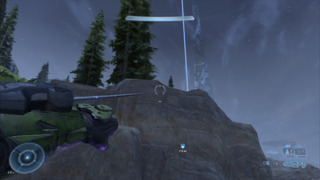
Correctly manoeuvring with the grapple isn't just a rote point-and-click exercise either. We conserve momentum during our elasticised flights, meaning that we usually fling ourselves a little above or past our anchor point. With some careful prediction, we can use that additional distance to our advantage, feeling like expert acrobats as we get one over on the physics. My only complaint would be that the range of the grapple is often not readily apparent, so I do often go to project it to a ledge only to have it snap back in my face like a broken rubber band. It's jarring, and honestly, a bit rude.
Yet, for all the ecstatic word of mouth around the Grappleshot, you wouldn't know that there are three other pieces of equipment in the Campaign: the Drop Wall, the Threat Sensor, and the Thrusters. We'll talk in more detail about them when we inspect the multiplayer. For now, know that the Threat Sensor is too call-and-response for it ever to feel like it's your unique decision to activate it. There are scripted sections of the Campaign where invisible enemies rear their heads, and the only way to unveil those heads is with this pocket radar. That is the simple game of Simon Says. The Drop Wall and Thrusters have their place, but I didn't often incorporate them into the play loop because the game put them out beyond arm's length.
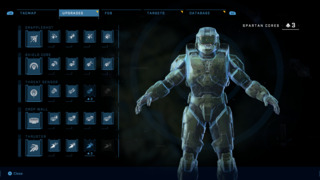
A barricade that swallows bullets and a twitchy dodge are superpowers you want to utilise with a snap of the fingers and without suspending your movement. They're optimised for you to turn them on in the split-second before a hail of fatal fire turns you to swiss cheese. But there's no one button to play any piece of equipment. Instead, pulling from your field kit means taking your thumb off the left stick, leaving you a sitting duck. You must then hit the D-Pad to call up the item swatches and press another directional input to select the equipment you want before pressing a third button to use it. On both large and small screens, the button prompts pinned to each gadget are almost imperceptibly minuscule.
So, you can't swap equipment in the thick of combat. Given that the grenades wear the same interface, you're also kept from trading Frags for Plasmas, or anything else, in a pinch. However, there are incentives to shuffle grenades between encounters: you have a limited stock of them, and no one grenade trumps all others in all contexts. I can't say the same for the equipment. Each recharges infinitely, swapping is awkward, and the Grappleshot blows the alternatives out of the water. So, most of the items are usually redundant. That wouldn't be the end of the world because we're talking about features that you can comfortably ignore. However, the impracticality of your toolbelt leaves a large impact crater on the play in that the upgrade and collectable structures are reliant on the equipment system.
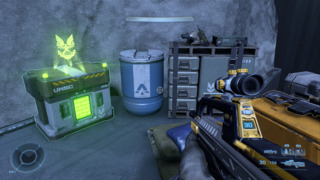
You can collect "Spartan Cores" from the cliffsides and caves of the circlescape and then spend them in an upgrade tree to improve your shield or any of your equipment. When implemented successfully, upgrade trees in games charge the player with making difficult decisions and allow them to put their personal stamp on their character. But for me, and it would seem the majority of Halo players, there's a pretty clear hierarchy of priorities on the Infinite upgrade ladders. A more robust shield is a must-have as it integrates into all skirmishes, and it's the thin skin between you and a lose state. After the shield, you're going to want to put points into the grapple because you're making the games' most favourable item even better.
With the big two taken care of, both hunting Spartan Cores and fixing up your exoskeleton feel less meaningful because you're allocating points to implements that will languish in the background. Exclusivity in which items we can don also affects the game's other common collectable: the Mjolnir Lockers. Find one of these military treasure chests, and your booty will be a weapon or vehicle skin for the multiplayer. The lockers have the potential to further invest us in the single-player because multiplayer cosmetics will have a more persistent application than anything in the Campaign. However, you can only display one skin on one multiplayer object at a time. Plus, most paint jobs for your armaments and automobiles are more artistically ambitious than the plain red the Campaign unlocks add. So, the Mjolnir Lockers aren't as tempting as they otherwise might be.
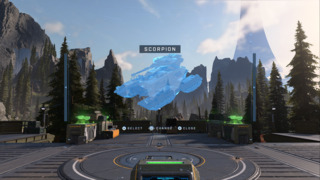
The Campaign also tosses out an indirect reward: "Valor". Whenever you save the lives of imperilled marines, capture an occupied base, collapse a propaganda tower, or put the brakes on a Banished armoury, you get to drink deep from the cup of Valor points. As your points total increases, you win the right to call in more ferocious weapons and vehicles at Forward Operating Bases. You may also consider taking some time out to kill the ambient bosses on the Forerunner's natural machine. Assassinating these baddies unlocks you better versions of your existing guns. So, how could this go wrong?
While filling and full of little blips of celebration, the open-world play is derivative. Where Halo 4's multiplayer felt like it was smuggling copies of CoD and Battlefield out of the mechanics store, Infinite's Campaign feels like it's gone back to fill its overcoat with Just Cause and Far Cry discs. The shooter is peering over the shoulder of its open-world competitors, copying their answers. It's doing that in place of pinning down the genre elements that might best accentuate Halo's core features. But there's a more insidious problem too.
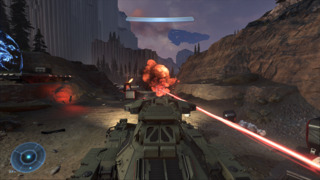
Halo still uses a two-weapon system: one in which your minimalist inventory pressures you to make every shot. In the past, when you have been able to switch weapons, it's typically been by scavenging them from fallen foes. The vehicles always worked in the same fashion: they appeared at fixed points in levels, and you could only drive them until the enemy reduced them to a pile of shrapnel. So, you weaved your way through a varied odyssey of tools, with the demands of the play regularly changing as your weapons and vehicles did.
Now, you can just keep fast-travelling back to a landing pad where you order your ideal bits from UNSC Grubhub. It makes for a more homogenous campaign that presses less of your creative juices. And most of the weapons and vehicles you do unlock aren't likely to matter: when you can only carry two guns into the theatre of war, you have to leave most of your collection at home. A preponderance of tech could coexist with a snug inventory if we could tell the nature of the battle ahead and had to thoughtfully match our loadout to it. But that's not Halo. The series is built on the notion that with any two weapons, you can clear any room, but if no one lock in the game needs any one key, what's the point of earning all those keys? The Campaign's preoccupation with acquisition manages to turn one of Halo's most enduring strengths into a withering weakness. The "Wasp" VTOL also has an outsized importance over all other unlocks. The ability to fly freely is paramount in an expansive open-world game full of towering mountains.
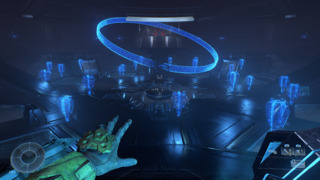
Really, I'm just not that psyched about Zeta Halo as a setting. The interiors are gorgeous, boasting volumetric lighting and a reflection model that has coloured tints skim across metallic bulkheads. The dim but saturated metal cathedrals perfectly capture the tone the game is going for. It's classic Halo made a little darker, but with all the same fun on display. Above ground, there are some awe-inspiring vistas. Unfortunately, you can run this program on an absolute beast of a computer and still observe a slight seediness to its shapes and textures. The rocks are just a little too blocky, the leaves on the trees a little too flat, and Halo's sublime skyboxes often replaced by an impassionate blue. You feel less that you are occupying a ribbon planet and more that you are peering a little too close at someone's diorama of one.
But where the graphics most let themselves down is in the range of environments. You're inside in the sterile, silver guts of the installation, or you're on the surface, which is temperate and rocky. Some regions are a little more temperate than others, some are a little more rocky, but the theme is universal. The map design in Infinite is what would have happened if Combat Evolved dumped you into its second mission and then never changed up the look of its world again.
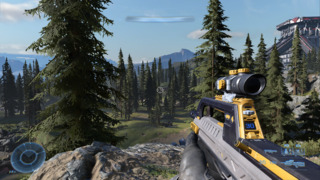
The uniformity of the setting means that it squanders its scale. These ancient rings would seem to be a superb fit for the open-world template; the series has always shown that these orbiting weapons play host to a multitude of climates, sometimes a stone's throw from each other. Yet, on the Zeta installation, you're in the same biome, whether you're in the North-west corner or South-East corner of the map. A setting whose raw size suggests it stretches from snowy peak down to tropical beach is reduced to an Oregon grown on basalt deposits. It's a shame because the soundtrack tells a much grander story about the environment you inhabit. In a stroke of rebellion, 343 turned to composers behind plush, emotive indie games like Ori and Gorogoa to lend Halo a voice. The result is an understated, stirring refraction of the Halo soundtracks as we've known them.
In my rambling, you may have also noticed a duality between where the game situates open-world play and where it stages missions. The traditional Halo action feels disconnected from this new open-world orienteering because most of the mainline quests don't take place in the open-world area. The levels proper shunt you into linear underground sections. It's as if the game knows that these tunnels and arenas are the only places it'll get the focus on narrative and pacing it needs to sustain Halo's classic calibre. It struggles to reach that bar anyway.
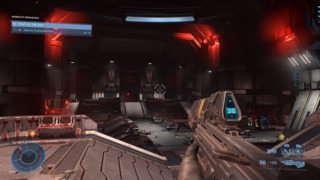
The memorable moments in the Campaign come in dribs and drabs. There's storming a stolen UNSC fortress to wage some wave-based survival or standing on a rooftop, swatting away a Phantom like it's a huge bee on our patio. But nothing yet stands out in this game like the Warthog run did in Combat Evolved, the hike through the jungle did in Halo 3, or riding the Mammoth did in Halo 4. It's not like you can replay any of the missions anyway, and as has been much publicised, it's a bummer that there's no Campaign co-op when Halo has been such a uniting social game.
Then there are all sorts of minor scuffs on the single-player that aren't huge deals individually but come together to seal the proceedings with a layer of jank. Enemies can vanish right in front of you, live dialogue can interrupt audio logs, or sometimes you'll boot the game for the map to load in impractically dark. Soldiers are subject to all sorts of fritzes: the Pilot can accidentally crush marines, I've had troops who insist on blocking my vehicles, and I've watched allies' pathing system turn on itself. One time during a mission, my sound died entirely, and on another occasion, I exited the Campaign only to have its music keep playing over the multiplayer. Actually, that last one was kind of cool.
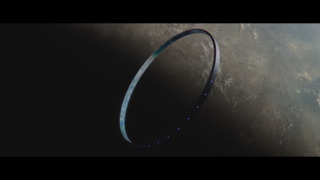
I know I've spent a lot of words on what's wrong with Infinite's Campaign and not that many on what's right, but I don't want to confuse you: this is not because it's an unmitigated disaster. It's just that the things it gets right you're unlikely to need explained. In the last couple of decades, almost every console gamer has experienced Halo's classic gun-melee-grenade triangle and the empowerment loops of open-world games. But the problematic characteristics of Infinite's Campaign are reasonably specific to Infinite, and so, require a lot of elaboration.
Fundamentally, Halo still works, and I'm happy enough to leisurely mop up the trinkets on its grassy ouroboros. Still, there have been stories seeping from the walls of 343 about this Campaign being stringently cut back from a more ambitious single-player. Looking at its watered-down, incongruous open-world, they're only too easy to believe. Thanks for reading.
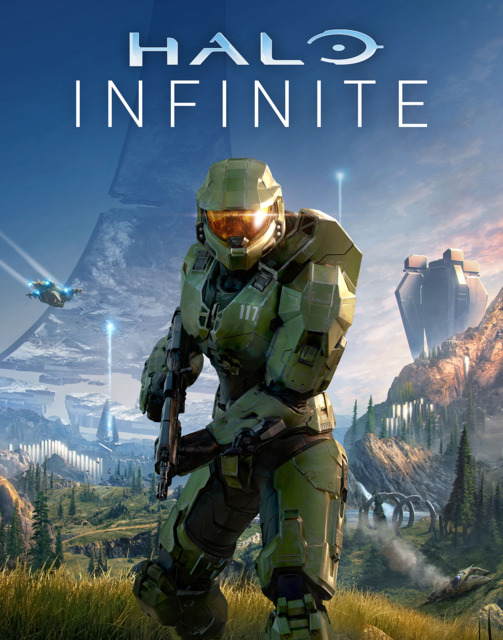
Log in to comment